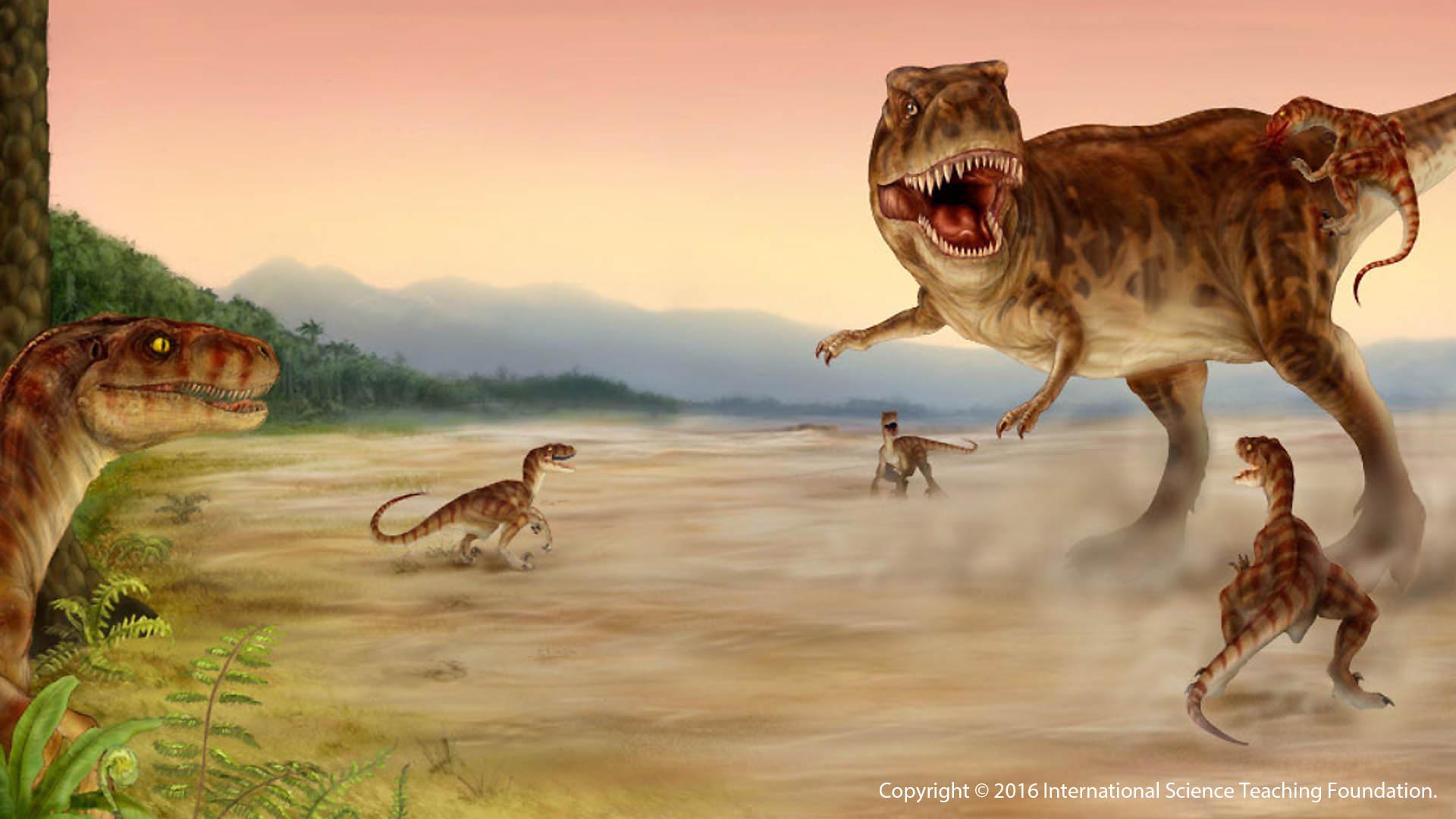
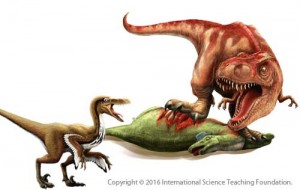
Velociraptors were nothing like what was seen in Jurassic Park. Instead of being clad in scales like a reptile, they had feathers all over and they grew up to 0.5 m in height. On the other hand, the fearsome Tyrannosaurus rex descended from smaller dinosaurs which had plumage across their bodies, such as the Dilong for example. To this day, however, fossils of this animal only show the presence of scales. The loss of feathers was probably due to the animals’ large size, just as elephants no longer need hair to protect them from the cold as the surface area to volume ratio in large-sized animals is very small and hence heat loss through the surface is minimal. However, there is speculation that some feathers were in fact used for display.
Birds: the descendants of dinosaurs
Velociraptors, carnivorous dinosaurs measuring 2 m in length and only 0.5 m in height, roamed the Earth approximately 75 million years ago. They were members of the Dromaeosauridae family, a group of small- to medium-sized dinosaurs which began to acquire some of the distinguishing traits of birds. There are skeletal similarities between dromaeosaurids and Archaeopteryx, the most ancient bird known to date. The close link between these two groups can be seen by the shape of the hip and forelimbs, something which is not seen in other groups of animals. Up until very recently, some scientists did not support this point of view, arguing that Dromaesauridae would have to have feathery plumage if they were to be related to birds. At the time, the fossil records did not provide the evidence to support that. But that all changed with the discovery of a fossil of a feathered dromaesaurid from the lower Cretaceous formations in northeastern China in 1999.
This fossil, as well as other fossils collected from the same cretaceous deposit, seems to indicate that all dromaesaurids—including Velociraptors—bore feathers but were flightless. Many scientists today believe that birds are the living descendants of dromaesaurids and therefore should be considered as living dinosaurs.
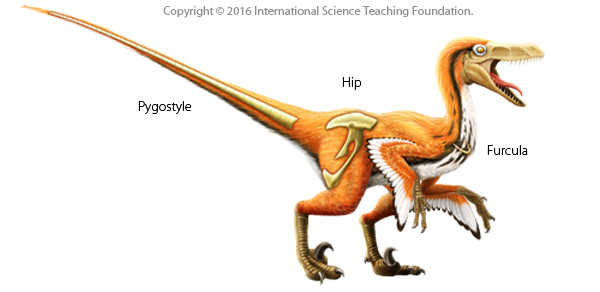
The presence of feathers alone is not enough evidence to conclude that birds evolved from dinosaurs. However, some distinct skeletal characteristics suggest that they are more closely related to dinosaurs than to any other vertebrate.
From forelimb to wing
The forelimb of some feathered dinosaurs may have evolved into the wings of today’s birds in this way:
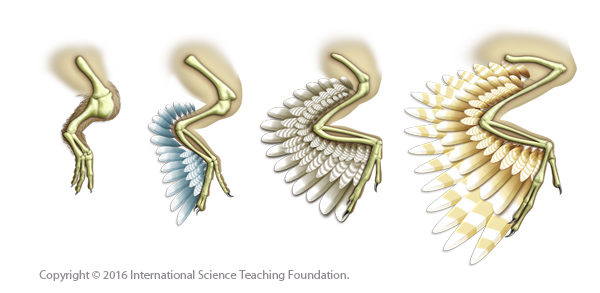
Dinosaurs change their appearance with every new discovery
For a long time, there was widespread belief among scientists that birds were the descendants of some reptiles which were not closely related to dinosaurs. But a long string of research work and subsequent new findings have revealed that birds are in fact the descendants of a particular group of dinosaurs.
Up until approximately five years ago, very few paleontologists would have envisioned a dinosaur bearing feathers. The common belief among scientists was that their bodies were covered by scales or a kind of hardened skin. Although we may never know for certain what these animals were like exactly, we do know that, for some reason or other, they (and there were hundreds of different species of dinosaurs) bore feathers.
Possibly, their true appearance may not be as appealing as the ones portrayed in movies (although these portrayals were based on the work of several paleontologists, biologists, paleobiologists, etc.), but we will all eventually get used to it.
Evolution of Feathers
Some small carnivorous dinosaurs began to grow feathers at least 150 million years ago. The earliest feathers were structurally simple, a bit like fluff. However, feathers evolved over time to become more complex, resembling those of birds today.
Their forelimbs slowly evolved into wings, which would be used as balancing tools to help with running, but none of them could fly. At best, the smallest ones would glide from tree to tree. Only Archaeopteryx and other primitive birds bore flight-ready feathers and anatomical characteristics that enabled them to fly. So, what did dinosaurs use feathers for?
What are feathers?
A feather is a complex integumentary structure on the skin formed from epidermal cells, just like hair in mammals or scales in reptiles. Feathers consist of a main axis called a rachis that has a series of branches–barbs–fused to it. The barbs themselves are also branched into smaller filaments called barbules. The basal end of the rachis expands to form a hollow tubular axis–the calamus–which inserts into a follicle in the skin.
There are two basic feather types: pennaceous feathers, with a main shaft–the rachis– and barbs and barbules expanding like a fan; and down feathers, fluffy feathers with a shorter shaft and fewer barbs and barbules.
- STAGE 1: Formation of the of feather follicle by the invagination of the epidermis.
- STAGE 2: The feathery structures found on Sinosauroptery and Dilong correspond to the second stage of evolution. In this stage, the early filamentous covering begins to branch out distally.
- STAGE 3: Caudipteryx is a step further in evolution since some of its feathers have a well-developed rachis and distinct barbs.
- STAGE 5: Pennaceous feathers are more highly specialized and found not only on the tail and limbs, but also distributed across the whole body, as is the case of Archaeopteryx.
What were feathers originally used for?
Feathers were long considered to be adaptations for flight, since all birds today bear feathers. However, the fact that a specific structure evolves to serve a particular function in present-day organisms does not necessarily imply that this function was its primary function. Indeed, a large number of birds today have lost their ability to fly (ostriches, penguins, etc.) but they still retain their feathers. At the same time, other flying vertebrates such as bats have developed the ability to fly actively despite not having feathers. The new discoveries of feathered dinosaurs in China indicate that feathers cannot be adaptations to flight, since the animals bearing them could not fly (as can be deduced from their anatomical characteristics). Therefore, feathers would not be a primary adaptation to flight, but rather an exaptation, that is, a structure that was not initially related to flight but that was later co-opted (adapted) to suit this function, and further evolved to serve other functions.
But if feathers did not originally evolve to serve the purpose of flying, what was their initial function? The functions that feathers serve today in birds give us some clues about the possible uses of the different feather types in their dinosaur ancestors. Apart from aerodynamic function during active flight, feathers in today’s birds exhibit colors for camouflage or display purposes. They are also waterproof, emit sounds, and can even be used as chemical defense. Lastly, feathers significantly contribute to regulating body temperature (in the same way as hair in mammals). For this reason, thermal regulation may explain the existence of early proto-feathers on early bird ancestors. It is also a fact that feathers played an important role in display in courtship rituals, as the trails of color found in fossilized bird feathers suggest.

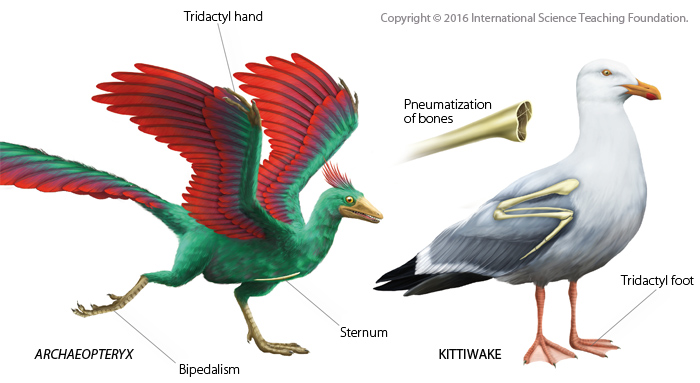
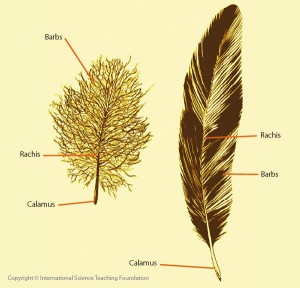
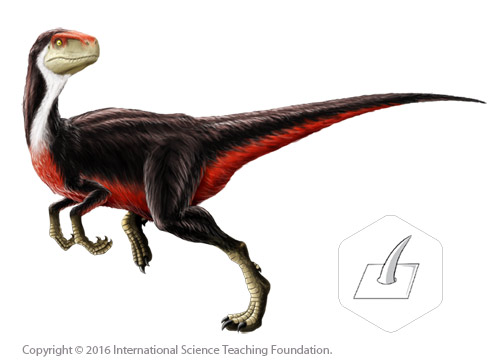
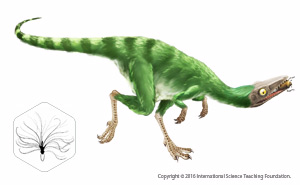

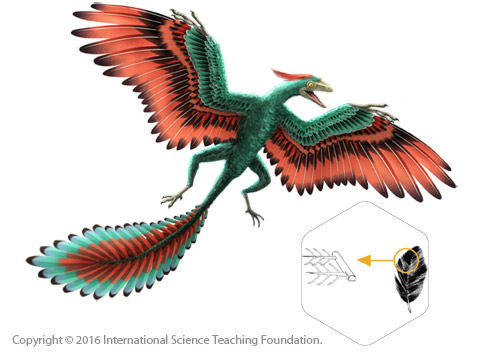










I simply want to say I am just very new to blogging and site-building and definitely savored your website. Most likely I’m want to bookmark your website . You surely have wonderful writings. Thanks a bunch for sharing your website.
great, great, great